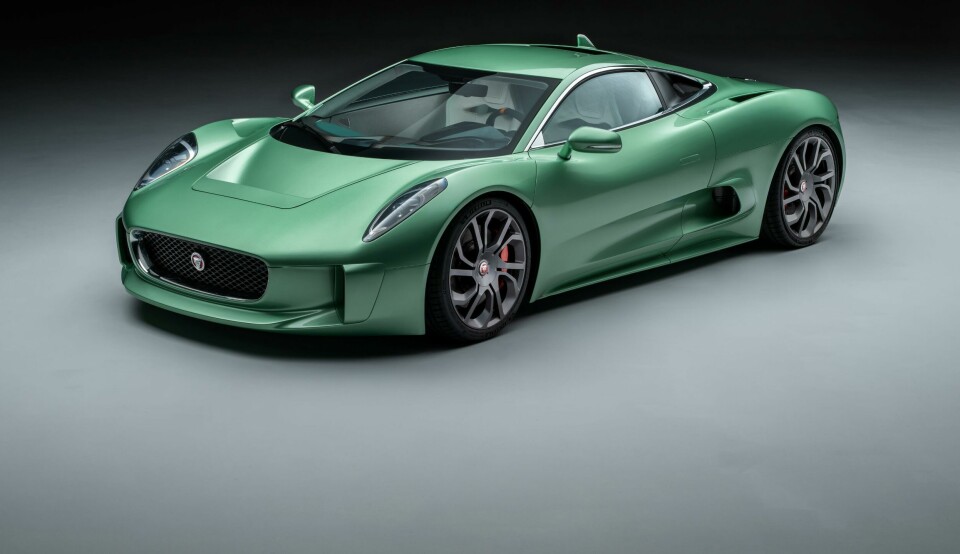
Callum revisits stunning C-X75 supercar
Legendary designer Ian Callum describes working on “the one that got away” and the principles of designing for longevity
The Jaguar C-X75 has been reborn, but it is not getting any less rare. This new variant is a one-off, bespoke order from an anonymous customer (for now) and is effectively a unique version of an already virtually unique car. Aside from the original show car and a handful of stunt cars produced for the James Bond film Spectre, this will be the first ‘production’ variant of the supercar.
It builds on a strong and growing trend among brands new and old to rediscover iconic designs. But this is no restomod.
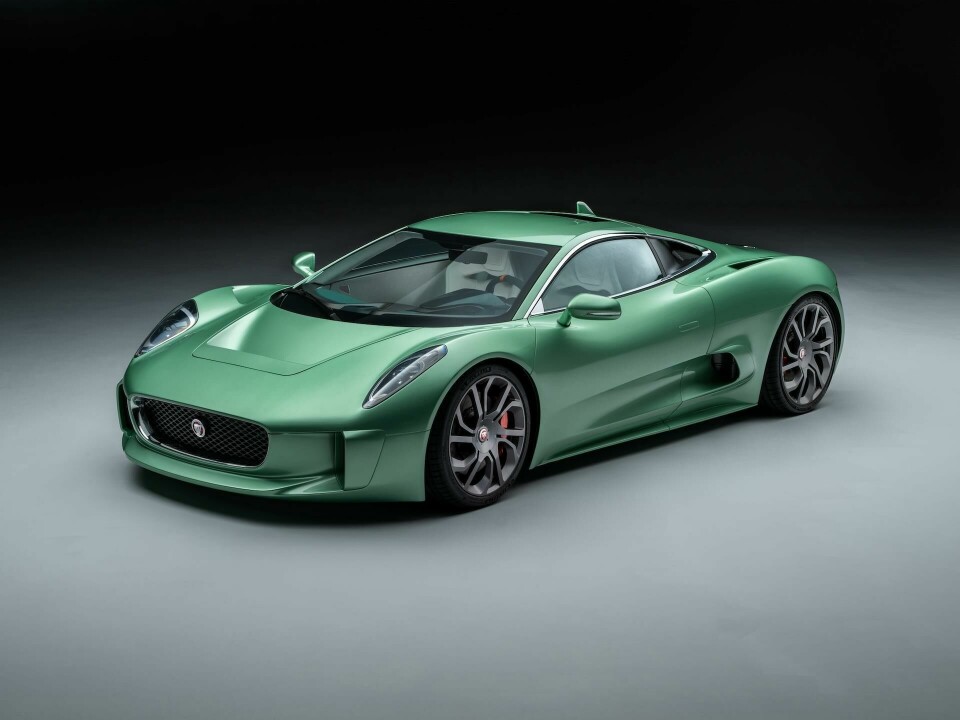
Specified in green – normally Ian Callum’s least favourite colour – to showcase its surfacing and to allow the highlights and shadows to sing, the design is as striking today as it was nearly 15 years ago. It has certainly won Callum over on the green cars front: “Until you see a car fully painted, you never really know what you’re going to get. We finally pinned down this color and I have to say, it looks fantastic. It’s got a real zap to it.”
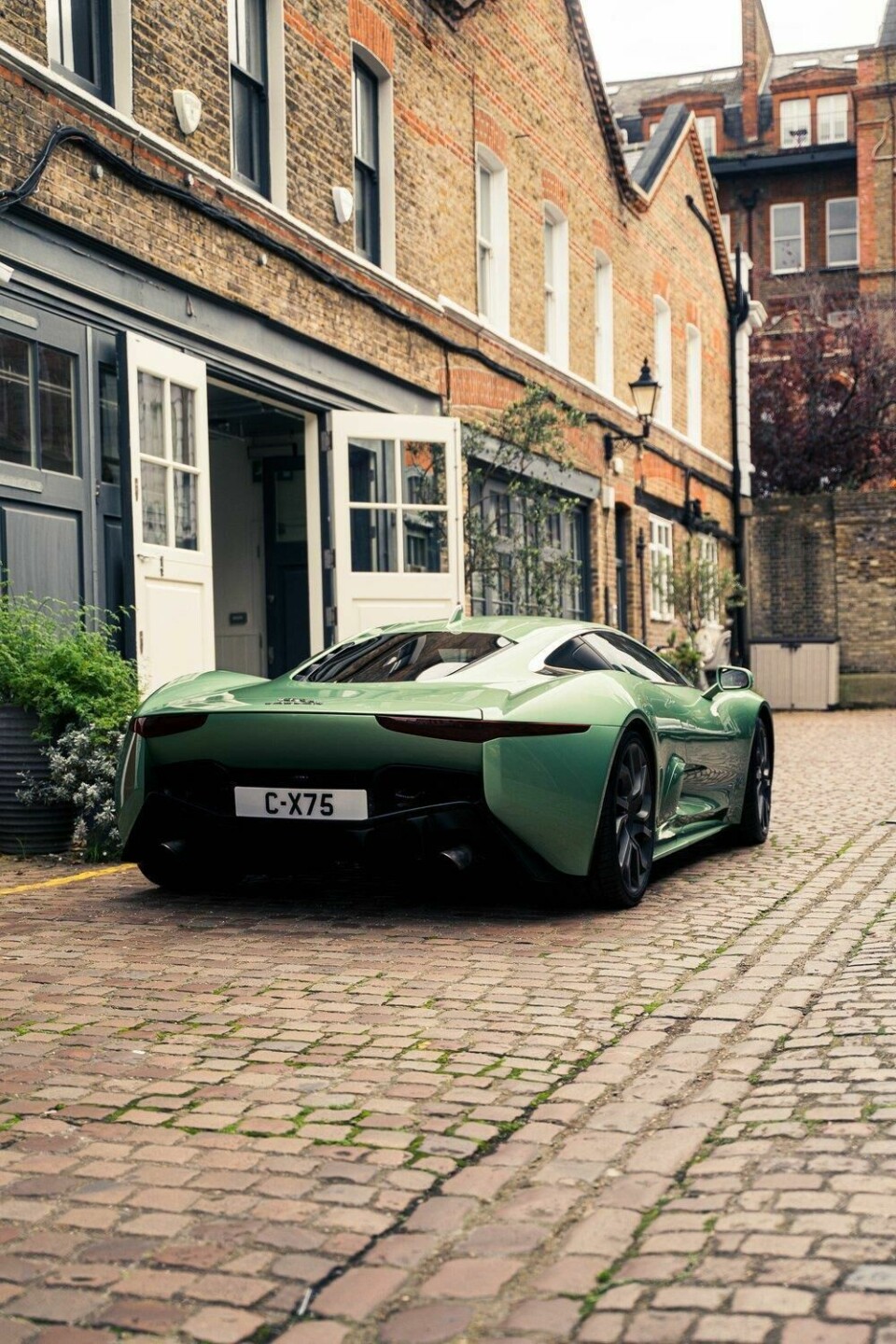
But, to the design. Humble as ever, Callum starts by paying homage to the team that worked on the original car. Among many others, these included Julian Thomson, not far away at General Motors’ UK studio, and Alister Whelan, now at mysterious start-up Forseven, on the interior. Callum notes that he has had some nice messages from the gang.
CDN recently saw the Bond C-X75 at the Bicester Scramble – a UK-based gathering for enthusiasts, hosted on an old airbase – where throngs of people were running alongside as it was positioned around the grounds. The sound of it alone was intoxicating and on the move it is a thing of beauty.
Very few cars have that same kind of aura, and it emphasises the importance of design that lasts. Indeed, this was a project that began in early 2009 yet it would not look out of place being revealed for the very first time at a motor show tomorrow.
“The answer is simple and I’ve always believed this: something which is honestly beautiful will be timeless. But that’s a very difficult thing to do,” says Callum. “You have to be hugely disciplined and able to edit things in a very thorough way to survive the ravages of time. Some designs don’t because they haven’t been edited properly – there are elements that are telltale of a period or trend. But because this car was born of a real sense of design, and what we thought was a perfect shape that was determined by aesthetics and not by needs.”
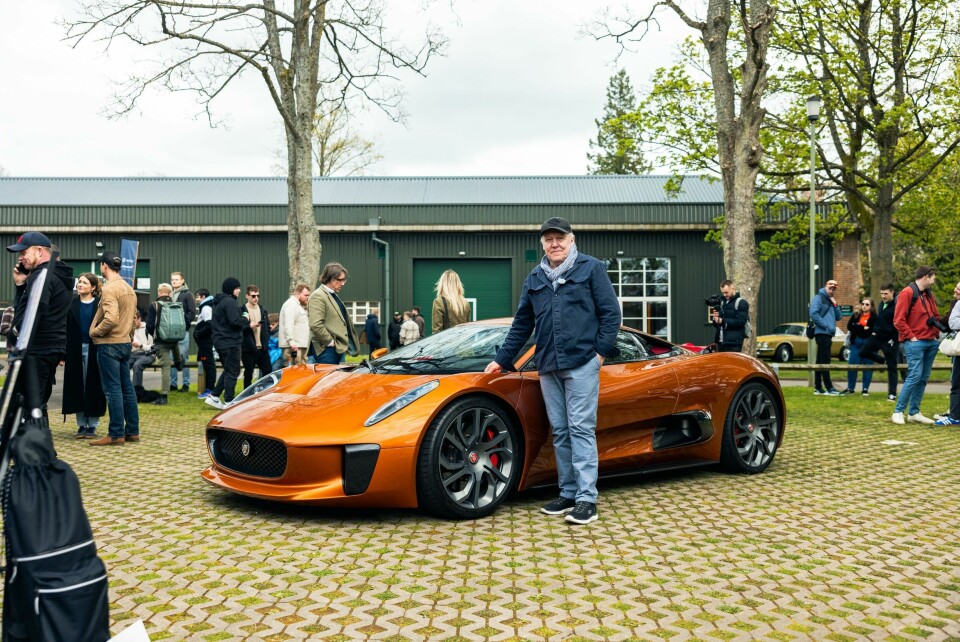
Colour aside, perhaps the most signficant change with this bespoke commission is the interior. The original C-X75 was a concept car. The others that followed were prototypes for a film set. The orange variant above was not given the full luxury treatment, whereas this new green example had the interior pored over by the team at Callum, and led by head of design, Aleck Jones. For Jones, it was a slight pinch-me moment, but that did not distract from the task at hand.
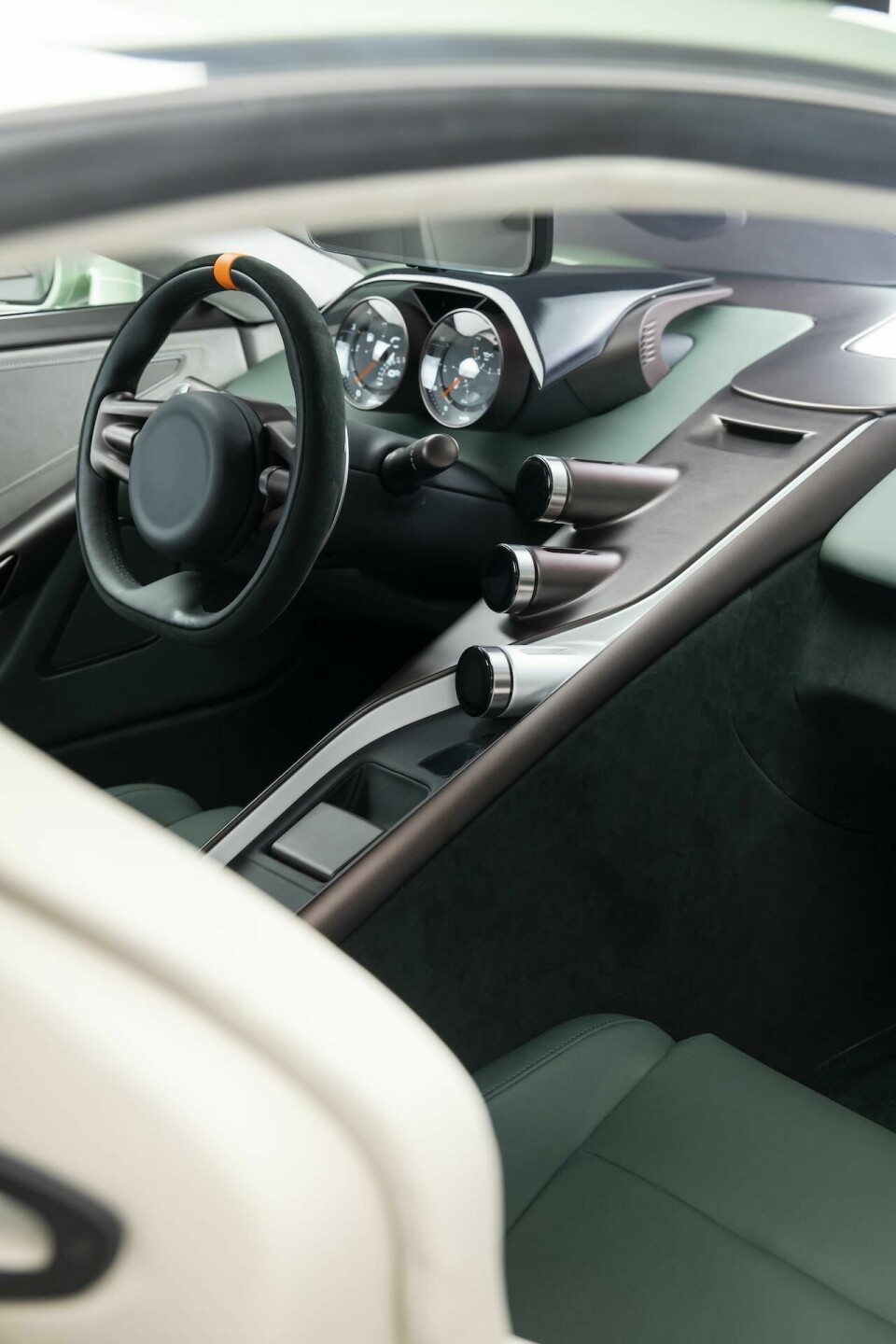
As a jumping off point, Callum says inspiration came partly from the Lotus Esprit’s ski slope instrument panel – “I’ve always loved that design” – with the broader aim of creating a kind of cockpit. A stack of controls mounted at the front of the roofliner certainly help to create that impression.
“We fixed on this notion of having a center console that extends through the car and almost wraps around the cockpit, so you’re encompassed by real, cold-touch metal, which was a real driving force for the graphics,” explains Jones. “When you get in the car, it’s almost like a fighter jet, which I appreciate is a bit of a cliche these days. You’re in there with purpose, you’ve got all your switchgear on the roof, and there’s a bit of theater in that – it very much feels like you’re about to take off, which really complements what this car is all about.”
Surfaces are drenched in premium materials, primarily a mix of leathers, in a combination of egg shell, dark jade green and earthy brown – which in some lights seems to carry a hint of copper. These hues are complemented well by machined metal details for the switches, dial surrounds, door handles and such. Riffing on the ‘unexpected red’ theory, a pop of orange can be found on the steering wheel’s centre mark. “We had to find a balance between something that’s quite sporty and aggressive but also quite luxurious,” says Jones, “so we created this upper and lower colour split, which is a little unconventional.”
Perhaps the most striking elements of the interior are the three prominent guages which seem to protrude from the IP. Each has its own rotary control angled towards the driver with integrated touchscreens. Elsewhere, other modern touches include a wireless charging pad and Apple CarPlay, along with a bespoke sound system.
The interior is not exactly barebones, then, but demonstrates once more the power of simple, meaningful design. This is true in terms of the packaging and lines that flow throughout the cabin, but also the restrained integration of technology – it would have been easy to mount a pillar-to-pillar touchscreen, pulsating ambient lights, chromed speaker housing and a steering wheel covered in controls. Indeed, we have become accustomed to a more-is-more, maximalist approach to interiors of late and Callum for one is not entirely impressed.
It’s like writing a piece of music and seeing what that does for people
“I do get frustrated that with exterior and interior design today, there seems to be a lot going on in one eyeful. The whole essence of beauty is being able to absorb it one look, enjoying it as a whole instead of seeing bits and pieces. There are plenty of cars out there today with some very beautiful forms in isolation, but when you put them all together into one big picture, it starts to get very complicated and fragmented. If you have strong lines, forms or themes that hold everything together in a powerful way, you can then add the details with much more confidence.”
So, having worked on both the original concept and the new road-going variant, does Callum have a favourite? “That’s a difficult one,” he concedes before proceeding to ultimately conclude that both brought their own sense of achievement and delight as a design project.
“With the original we were making a statement – Little Jaguar was punching above its weight at the motor shows and gathering the crowds. It was great fun to do purely as a design exercise and was hugely satisfying,” he explains. ”At the same time, coming back to rectify it was also very satisfying. There are two things about car design which give you the most joy. One is the actual process of creating something new, the second is the joy it gives to other people. It’s like writing a piece of music and seeing what that does for people emotionally. Cars are the same, so at the end of the day, I probably enjoyed both projects in equal measure. What a political answer!”
The C-X75 is part of Callum’s bespoke line, which by accounts is seen as a growth opportunity moving forward. We certainly hope to see more.


















